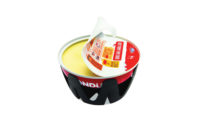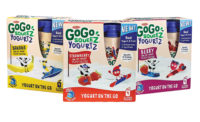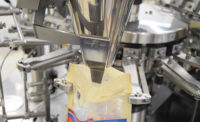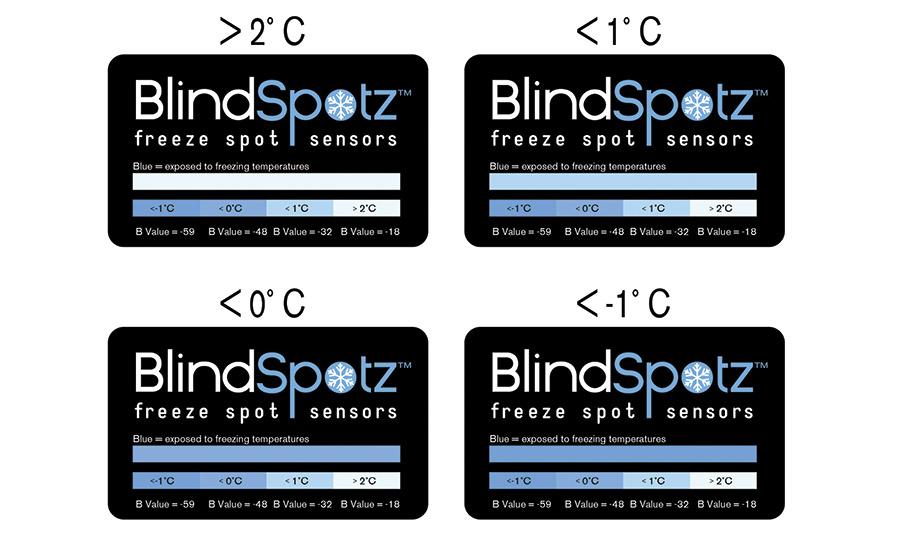Dairy packaging sees healthy growth
Packaging innovations address shelf life, sustainability and more.




The global market for dairy product packaging is experiencing healthy growth. It’s projected to expand at a compound annual growth rate (CAGR) of 4.5% through 2027, with gains led by milk and yogurt products, according to a report from Future Market Insights, Valley Cottage, N.Y. The report, “Dairy Products Packaging Market: Global Industry Analysis (2012-2016) and Opportunity Assessment (2017-2027),” attributes the expansion to increasing consumption of dairy products, particularly in the Asia Pacific region, which is expected to grow the fastest with a CAGR of 6.4%.
Driving forces include urbanization, rising incomes, consumer awareness of and preference for fresh products, interest in clean labels and sustainability, growing concerns about food waste and rising demand for healthy snacks and ready-to-eat foods.
As a result, dairy product packaging is addressing needs for manufacturing flexibility, more portable packs, shelf-life extension, retailer efficiency, consumer convenience and improved sustainability profiles.
The report foresees expansion in both the rigid and flexible packaging segments. It also forecasts greater use of aseptic packaging, a format that can eliminate the need for refrigeration and preservatives, enhance food safety, deliver clean labels and help companies achieve sustainability goals.
On the packaging line
The flexibility to quickly change over between sizes and formats and higher levels of automation characterize today’s dairy packaging lines.
“If you want to be successful in the dairy market today, you have to deliver high quality, produce profitably and yet be equally flexible,” said Alfred Gürster, head of production and technology at Bechtel, a privately owned dairy in Schwarzenfeld, Germany. The company recently installed filling machines from SIG Combibloc, Chester, Pa.
Gürster noted that each of the new SIG filling machines fill three sizes of combiblocMidi or combifitMidi cartons. The customized line configuration includes a handle applicator that combines filled packs in tray formations of two by three.
Other machinery trends include “greater acceptance of alternative control systems,” said Peter Fox, senior vice president of sales for Somic America, a supplier of end-of-line equipment based in Eagan, Minn., that produces covered tray display packages.
Simulation, another area of activity, expedites machine design, construction, installation and startup.
“Pre-testing by using the actual program — along with the Solid Works simulation — provides real-time simulation to ensure proper machine and program functionality before the machine is powered up,” Fox said.
Enhancing sustainability
Sustainability is another important attribute for dairy product packaging.
“There is a growing commitment within the industry to move away from single-use plastics and focus on recycled content, thinner material and nonplastic products,” reported Alastair Bearman, sales and marketing director at Clondalkin Flexible Packaging Bury (formerly Chadwicks), Bury, England.
As a result, there is considerable interest in transitioning to 100% recyclable or reusable packaging, as well as recycled-content materials. For example, Clondalkin introduced an ultraviolet (UV) light-blocking shrink-sleeve label. It allows bottle walls to be downgauged and reduces the amount of titanium oxide needed, the company noted. The UV-blocking technology extends shelf life and protects vitamin content, as well as product color and flavor.
To boost the renewability of its single-serving aseptic cartons, Tetra Pak, which has a U.S. operation in Denton, Texas, said it is developing a paper straw. The paper straw is expected to be on the market by the end of 2018 and will help reduce plastic waste.
A totally renewable aseptic carton from SIG, the SIGnature Pack carton, replaces conventional polymers in its multilayer construction with plant-based polymers. Its North American debut will occur in September 2018 with the re-release of nutpods’ pumpkin spice creamer, the companies said.
A mass balancing process, certified through internationally recognized third parties, ensures the polymers used in the SIGnature Pack carton are based on an equivalent amount of bio-based feedstock. To alert consumers to the sustainable nature of the carton, the creamers will display the SIGnature Pack label along with the Forest Stewardship Council label, which verifies that the processed wood fibers used to produce the paperboard come from responsibly managed sources.
On the horizon
Dairy packaging also is becoming increasingly interactive. Time-temperature indicators have been available for years to ensure products are handled properly and retain their quality. However, traditional indicators cost about $3 each and require a secondary application operation, which is often manual.
“Traditional time and temperature products are used to create models to predict if there is a temperature problem, but they aren’t actually measuring product temperature,” said Patrick Edson, chief marketing officer for Chromatic Technologies Inc. (CTI), Colorado Springs, Colo.
A less-expensive option is based on temperature-sensitive ink from CTI; it does not require a separate application operation. The BlindSpotz freeze indicator is simply printed with the package graphics and provides a visual indicator if a product has frozen.
“Because the technology is printed on the label, it’s measuring the temperature of the actual dairy product,” Edson said.
Temperature abuse soon will not be the only condition a “smart” package can detect. Researchers at Clemson University, Clemson, S.C., are working to develop packages that would use communication between cells to detect food that’s beginning to spoil. Sensors would detect the signals cells send to each other when they start to break down. This cell-to-cell communication, called quorum sensing, uses signaling molecules called autoinducers.
“The idea [behind the quorum sensing] is to take what the microorganisms do naturally, put that with being able to sense that they are starting to create a food spoilage situation and build that into a sensor,” said Kay Cooksey, the Cryovac endowed chair in the Clemson Food, Nutrition and Packaging Sciences Department.
Current methods to detect food spoilage use labels or materials that change color.
Another smart packaging project at Clemson involves packaging that can energize itself by harvesting its own power.
“Development of an energy-harvesting device that can harvest power from forces naturally occurring in the distribution environment ... just makes sense,” explained Gregory Batt, director of the Clemson Package Testing Laboratory.
Looking for a reprint of this article?
From high-res PDFs to custom plaques, order your copy today!










